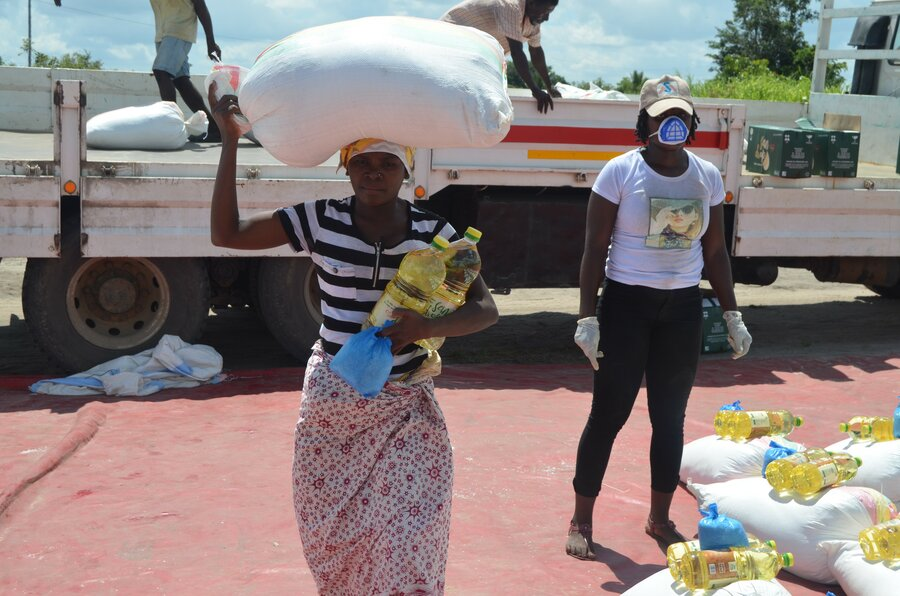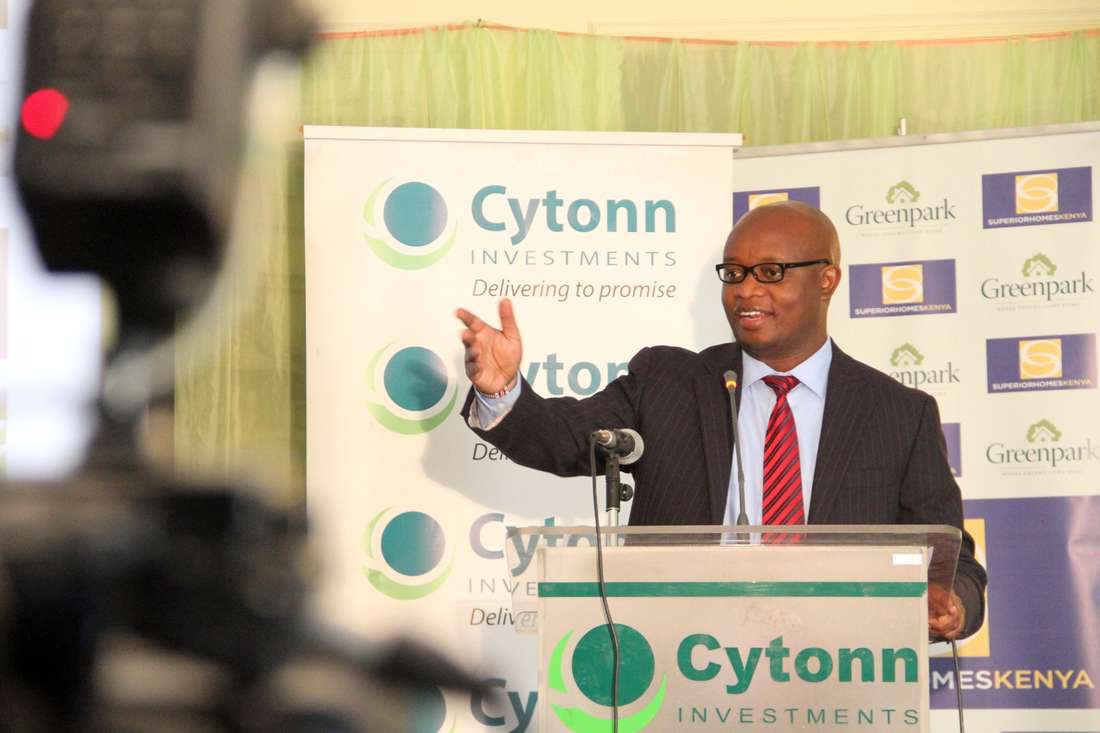BY THOMAS MURAYI, PETER KARAH, and EDWARD OBIKO
Electronic vouchers: At the onset of the COVID-19 pandemic, residents of Kibera, the largest slum of Sub-Saharan Africa, gathered at a district office to collect food donated by former Prime Minister Raila Odinga. These donations were made to cushion the residents from hunger amid the pandemic. The situation got out of hand and a brief stampede ensued, which led to the death of at least two people and injuries to several others.
Social distancing became the new normal during the pandemic. In the pre-COVID-19 era, humanitarian organizations, such as the World Food Programme (WFP) used to deliver food aid physically. Since the outbreak, these organizations have struggled to distribute relief to the extremely poor as they fear contracting or spreading the SARS-CoV-2 virus.
In light of the casualties caused by the poorly organized and chaotic food donation drive in Kibera, the Government of Kenya banned the public distribution of food and non-food donations within communities across the country. The government envisages that this ban will curb such incidents in the future. To avoid the recurrence of such incidents, humanitarian organizations must find new ways to distribute relief.
Digital technologies have been transforming the way we respond to emergencies. An example of such an innovation is SurePay. Launched by M-Pesa in Kenya, SurePay is a service that facilitates humanitarian organizations to distribute relief to specified recipients using electronic vouchers.
Through e-vouchers, humanitarian organizations can impose restrictions on funds for specific uses and to specific cash-out points. During crises like the COVID-19 pandemic, humanitarian organizations can use e-vouchers to distribute social assistance to those affected adversely.
Electronic vouchers are a type of cash-based response that allow beneficiaries of social assistance to receive relief for various goods and services. This is done through approved vendors in local markets where beneficiaries are located. The donor organization pays a specified financial service provider (FSP). The FSP then generates electronic vouchers in the form of digital money and handles the funds on behalf of the donor organization. Electronic vouchers allow beneficiaries greater choice and control and are cheaper to implement.
The COVID-19 pandemic has affected the health, social, and economic situation of communities across the world. Reeling from significant income losses, low- and moderate-income populations need support from governments and humanitarian organizations.
Humanitarian organizations have been providing relief to vulnerable groups for quite a while through the physical distribution of food and cash. However, these organizations have faced several challenges, some of which are as follows:
- “Leakages” in benefit transfer programs by intermediaries
- Diversion of benefits to unintended purposes by the beneficiaries
- High cost of logistics involved in handling cash and distributing it physically among the recipients
- Risk of sidelining women, since male members of the household tend to collect cash on their behalf and sometimes divert these funds to unintended
The World Food Programme (WFP) introduced the e-voucher system in Kenya in 2015 to disburse funds to beneficiaries. It implemented the e-voucher system in five counties to strengthen its cash-based response. Through e-vouchers, WFP ensures that beneficiaries use cash to pay for food from designated stores.
These vouchers enable WFP to trace the entire value chain from disbursement to the expenditure of funds. A back-end functionality provides humanitarian organizations with reports that show the utilization of funds in terms of the amount, balance, and stores where beneficiaries used the funds. WFP, in partnership with Mastercard, has now been implementing similar e-voucher programs in 25 countries.
In other markets, such as Nigeria, humanitarian organizations use e-vouchers to distribute relief to internally displaced people and vulnerable host communities in conflict-prone areas. Catholic Relief Services (CRS) has also been providing food assistance to conflict-affected states in Nigeria. Initially, CRS disbursed cash to beneficiaries. However, due to challenges around logistics and security of funds for cash disbursement, CRS switched to e-vouchers.
Why should humanitarian organizations and governments use e-vouchers?
Humanitarian organizations and governments can use e-vouchers to enhance cost-effective reach for beneficiaries at the last mile. This saves logistical costs associated with the delivery of food items or cash to beneficiaries. Humanitarian organizations and governments can remotely process and share e-vouchers with the nominated phone numbers of the beneficiaries.
See >> 7 Women Running Successful Businesses in Kenya
E-vouchers can also help widen the reach of both humanitarian organizations and governments through nominated agents or local administrators, such as chiefs and sub-chiefs, who can map and collect mobile phone details of beneficiaries. The data collected can help create a database of beneficiaries for relief distribution. Agents and local administrators can identify and register beneficiaries from remote areas and pastoralist communities, who often migrate from one place to another.
Some other benefits of e-vouchers are listed below:
- Reduced administrative costs: E-vouchers are cheaper to use due to the lower cost of distribution logistics. Humanitarian organizations and governments can repurpose these savings and reallocate more resources to relief efforts.
- Economic growth of the local area: Beneficiaries redeem vouchers at designated local shops to get the food items. This increases the circulation of cash, which results in the economic growth of the local area. Hence, e-vouchers have a multiplier effect on the local economy.
- Better governance: E-vouchers can help enhance transparency and accountability, and reduce chances of misappropriation before the funds reach the target beneficiaries. This enables humanitarian organizations and governments to ensure that the intended beneficiaries receive the vouchers and utilize the funds appropriately.
- Enhanced data-backed monitoring of disbursements: To administer e-vouchers, humanitarian organizations and governments create data sets of beneficiaries. Such databases have multiple use-cases, such as determining consumption preferences of beneficiaries within different localities. Humanitarian organizations and governments can also develop a customized portal to assess the use of funds by beneficiaries.
- Ability to restrict the use of e-vouchers to desired purposes: Humanitarian organizations and governments can enforce conditions on how and where beneficiaries can use the provided funds. By locking the redemption options to specific vendors, such as food stores, they can ensure that beneficiaries utilize the disbursed funds meaningfully.
Read >> Top 10 Most Influential Women in Kenya
E-vouchers offer several benefits to recipients, humanitarian organizations and governments, and the larger ecosystem. It is prudent that social assistance programs should explore ways to implement e-vouchers.
In our next article, we examine the implementation of e-vouchers comprehensively. We also assess the roles of key stakeholders in the ecosystem, understand the challenges they face, and reflect upon the lessons learned so far.
The Authors are Business Executives at MicroSave Consulting (MSC).













Leave a comment